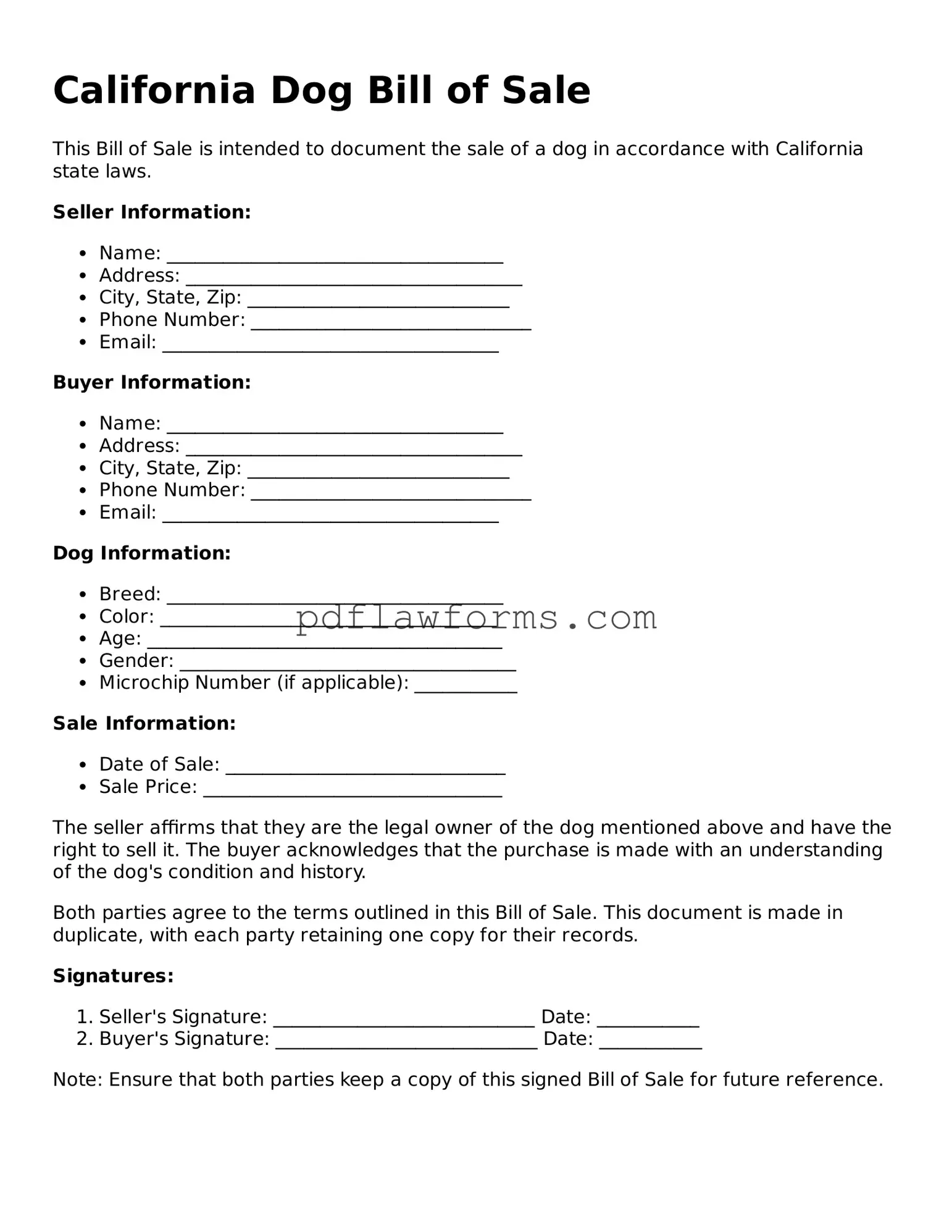Dog Bill of Sale Form for the State of California
The California Dog Bill of Sale form is a legal document used to transfer ownership of a dog from one party to another. This form outlines essential details such as the dog's description, the sale price, and the signatures of both the seller and buyer. Understanding this form is important for ensuring a smooth and lawful transaction when acquiring a dog.
To fill out the form, click the button below.
Make My Document Online
